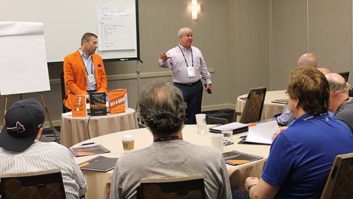Putting the Problem First Makes Your Solutions Appear More Enjoyable

Dave Chace ([email protected]) is
president of Training Allies, a CE-focused training firm in Philadelphia. Thank God for DVRs. Not only can we store all our favorite programs and view them at our convenience, but we can also skip past all those annoying commercials. Awesome, right? Not so fast. Commercials can be a nuisance, but if you’re smart and pay attention, they can also teach you some valuable lessons. After all, commercials are designed to do one thing: sell.
Advertisers have gobs of research around what tempts us and motivates us to buy, and it’s pretty fascinating–all the different things that govern our buying decisions. At its core, advertising is based in large part on two powerful forces that drive every human being: the desire for pleasure and the desire to avoid pain. Therefore, advertisements are geared to promote pleasurable associations like convenience, relaxation, love, and security; they are also chock full of painful associations like frustration, fear, and loss.
A simple formula of many ads is to exaggerate the pain of your problems, so their solutions will appear more pleasurable as a result. For a great example, look no further than commercials for laundry detergent. Typically they begin with some hapless homemaker whose entire family seems constantly slathered in everything from mustard to motor oil. Only after they’ve shown the litany of stains–and the associated misery for the homemaker–do they unveil the miracle solution: their detergent.
This is a great lesson to consider when presenting system solutions to your clients. Many integrators, when proposing ideas for a new system, focus their attention almost entirely on the pleasurable contributions the system will make to the customer’s lifestyle–how it will add convenience, security, entertainment, and more. But as appealing as these feelings are, they can be even more potent when presented in stark contrast to the “pain” the customer is currently experiencing. This is the part that too many integrators glance over too briefly, or overlook entirely.
What Hurts Your Client Most?
To give your presentations more teeth, take a page from the advertiser’s playbook and spend more time focusing closely on the pain first. During a consultation, start by asking questions that uncover problematic situations; then poke the stick deeper and ask more questions geared toward the consequences that stem from those problems. This will help foster negative associations toward the customer’s present setup, and better set the stage for the positive solutions your system offers.

A simple formula of many ads is to exaggerate the pain of your problems first, so their solutions will appear more pleasurable as a result. For example some integrators, when proposing a front door camera, might simply ask, “Would you like a camera for the front door, so you can see who’s there before answering?” This sounds convenient and may sell the camera; however, it’s only aimed at the pleasurable benefits associated with the camera.
To better illuminate the potential pain or frustration that the camera may alleviate–and thus make the benefits even more desirable–consider these four questions:
1) “Your office is in the back of the house…that’s a pretty good distance from the front door, isn’t it?”
2) “What happens when the doorbell rings while you’re working?”
3) “Is it pretty frustrating when you drop everything to answer the door, only to find you didn’t need to?”
4) “How convenient would it be to immediately see who’s at the door every time the doorbell rings?”
You’ll find this formula works great for virtually any element of the system you’re proposing.
Customer consultations should be enjoyable, positive experiences, and the products you offer represent a lot of positive associations and experiences. But don’t be afraid to learn from the experts and focus real energy on some of the pain in your customer’s lives–it’ll make what you have to offer even more appealing, and will help you sell bigger systems.







